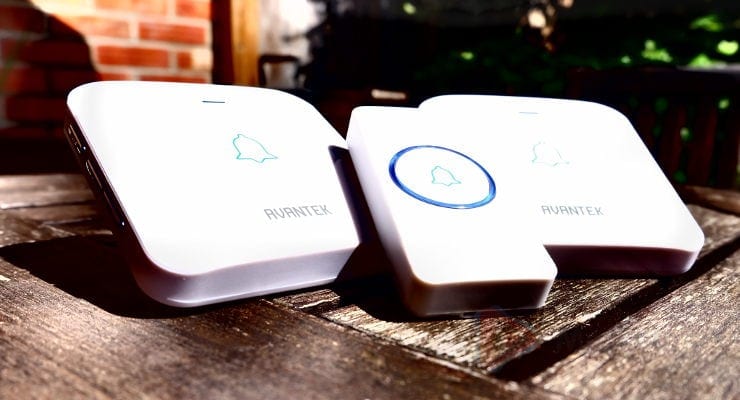Innovations in Solar Power Systems
Over the past years, solar technology has been the attention-grabbing energy solution. That is true, especially after a critical evaluation of how climate change is seriously threatening the existence of human beings.
Since the International Energy Agency declared solar the cheapest electricity source, many experts have switched focus towards creating award-winning solar technologies to improve it. The entire world is looking for a 100% renewable source of energy.
Many exciting innovations have emerged that will continue to improve and augment current technologies. Some of these include introducing new materials, unique techniques for building solar panels and proven and tested installation methods.
That said, some of the latest innovations in solar power systems include the following;
1. Agrivoltaic System
One of the biggest problems with solar power system installation is where you can put it. Most people have the misconception that solar systems will work well when placed on residential rooftops. Unfortunately, some neighborhoods in various places are shady most of the time. When roof replacement is taking place, it will take some time to install the pre-existing solar panels and ensure that you have enough power for your home.
Your home will have a continuous flow of electricity if you put the solar panels in places without the shades. For example, agricultural land, canals, or reservoirs. Ideally, that is where the concept of agrivoltaic system emerged.
Agrivoltaics is the installation of solar power systems on farms to improve farming outcomes and generate electricity simultaneously. This practice is also called “solar sharing,”. It improved crop yield and energy production by maximizing land use and resource efficiency.
For optimal plant growth, Agrivoltaics create a shade for crops like corn, spinach, lettuce, and tomatoes. That reduces drastically the requirement of daily watering. Of course, while preserving yields, the same panels will generate electricity channeled towards powering the home equipment.
Another fascinating innovation within the line of Agrivoltaics is the Floatovoltaics. Floatovoltaics is about floating solar panels on water bodies. It provides myriads of benefits, which include;
• Reducing evaporation and improving water quality.
• As water cools the solar planes, they tend to function more efficiently.
• Floatovoltaics can happen on water surfaces with an existing power plant.
Solar power system needs a proper setting for 100% conversion of sunlight into electricity. In that case, Agrivoltaics has emerged as a promising choice.
Effective solar power system installation is a critical component that directly impacts energy production. That’s why you should always work with an expert in solar power system design and installation to ensure the proper setting and placement of solar panels.
2. Perovskites
Perovskites are materials with a specific crystal structure named after the Russian mineralogist Lev Perovski. They help reduce the weight and costs of cells. It also increases efficiency.
Solar researchers are celebrating the breakthrough of perovskites in the current age because they’re easy to manufacture. They also don’t need the high-heat process. Regarding disposal, perovskites can be deposited on the earth’s surface as a vapor or liquid.
In comparison to the silicon cells, the perovskite cells can be adjusted to release electricity from different wavelengths. That means they can hold photons, which silicon cells can’t.
The solar power system experts advise that, with the combination of heterojunction and tandem solar cells, the thin perovskite layers will absorb more photons from some specific wavelengths. Silicone layers are relatively weaker when it comes to that.
In the near future, the cost of solar cells will be significantly lower because Perovskite solar cells can be easily made and applied to flexible substrates while in extremely thin layers.
3. Solar Paint and Coatings
This innovation is making it possible to integrate solar power into everyday structures and objects. It helps in solar generation from areas like roads, buildings, and even clothing.
Solar paint and coatings have photovoltaic parties. If these components are applied in any area, they convert sunlight into electricity.
The introduction of solar paint and coatings will help reduce the dependence on traditional solar panels. Soon, it will be integrated into architectural designs, making solar power generation more ubiquitous and versatile.
4. Microinverters
A key advancement in the field of solar inverters is the introduction of microinverters. Microinverters replace the necessity for a big, central inverter, which may be costly and inefficient.
Solar energy panels need to be converted from direct current (DC) to alternating current (AC). Converters are, therefore, crucial parts of a solar power system. They convert DC electricity into AC electricity to power homes and businesses.
The key features of the latest microinverters include;
• Individual panel optimization
• Enhanced monitoring
• Ease of installation
• Compatibility with battery storage
• Remote firmware updates
• Grid connectivity.
5. Solar Windows
Sunlight coming through your windows can soon be converted into electricity due to a new technology called solar windows. The photovoltaic glazing used in this approach allows solar energy to be captured while maintaining the transparency of your windows.
The covering of solar windows has the tiniest solar cells—less than a half-rice grain size. Installing new windows is not necessary; all that is required is applying it to the glass’s surface.
Solar windows provide countless possibilities. It’s believed that there are between 5 and 7 billion square meters of glass surface in the US alone. As more cities aim to achieve net zero climate objectives, Solar windows have the potential to produce clean and reliable energy.
Conclusion
Solar power systems are a cost-effective and environmentally friendly energy source. They harness the power of the sun to generate electricity. It’s quite fascinating how the solar power systems advancements are reshaping the energy production landscape.
The key innovations in solar power systems are Agrivoltaics, Perovskite solar cells, solar paint and coatings, microinverters, and solar windows. All these advancements offer solutions to the challenges like limited space, efficiency, and versatility. The aim is to ensure solar power is more accessible and adaptable to various applications.









